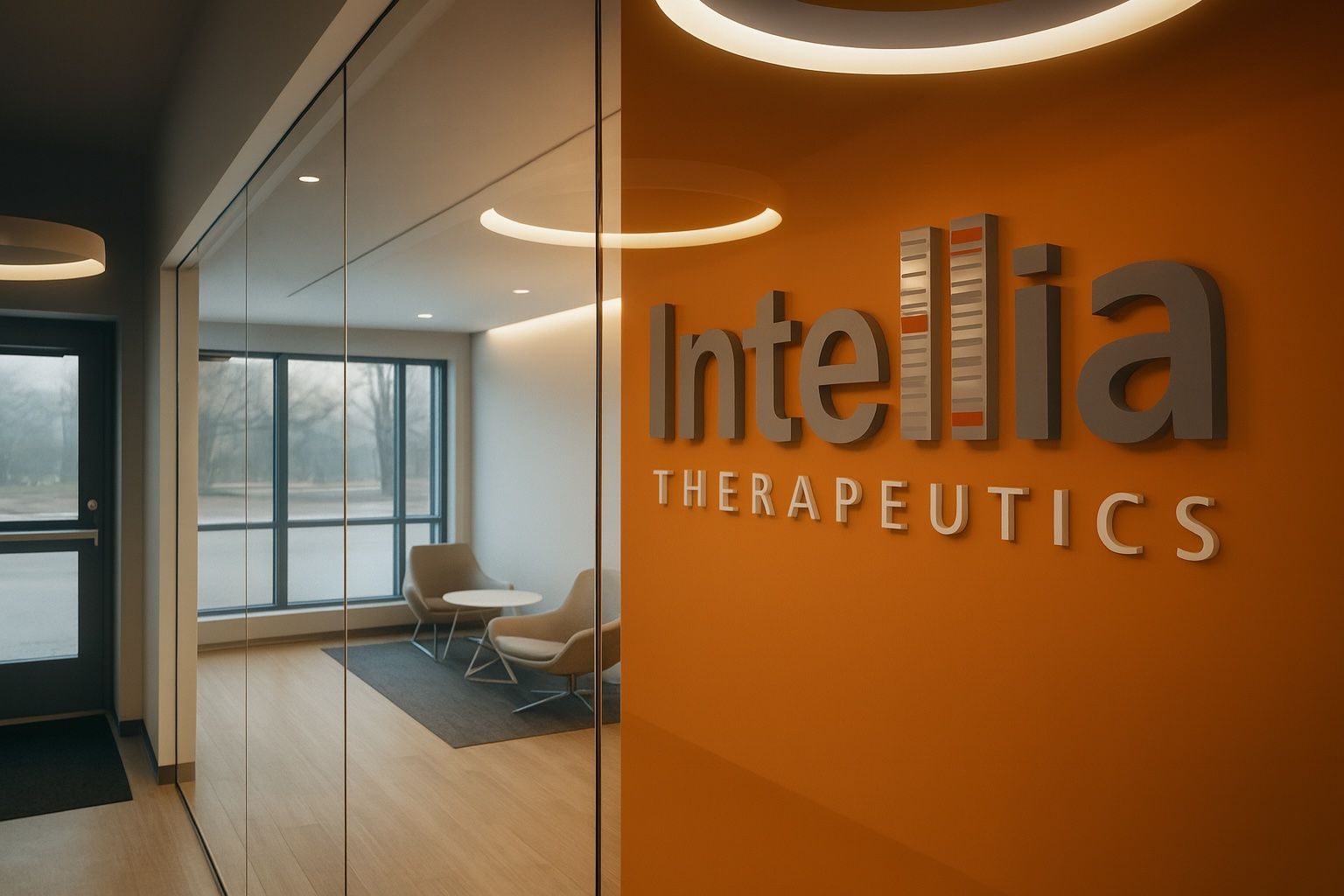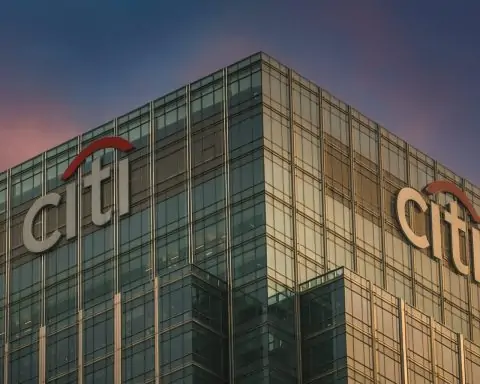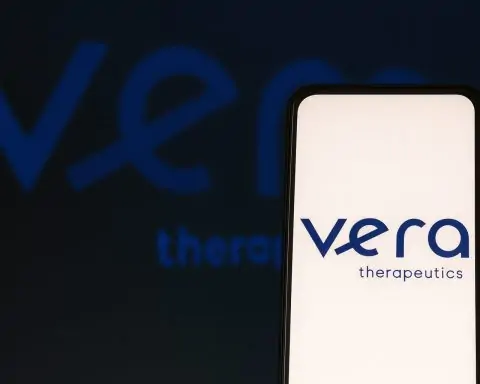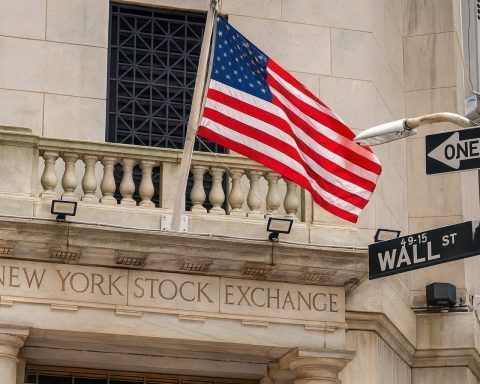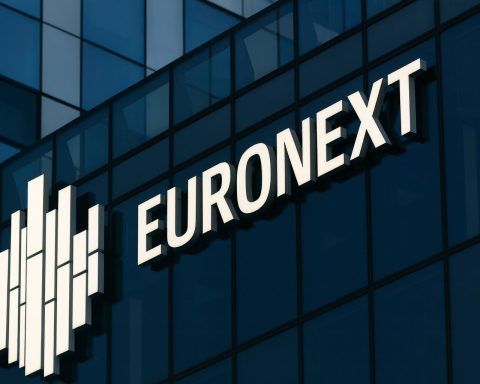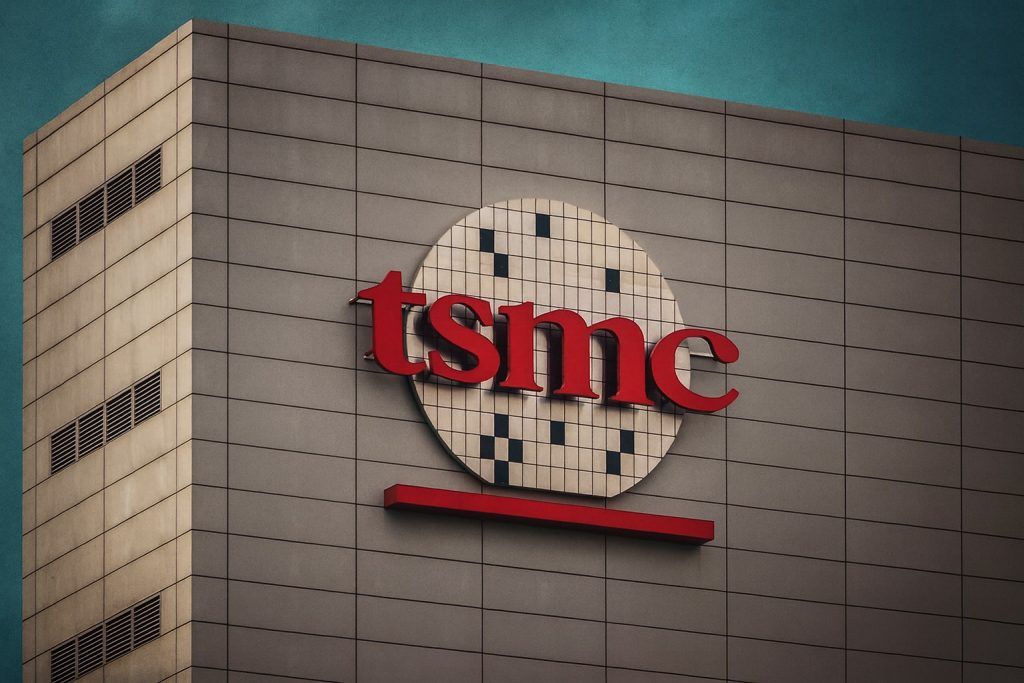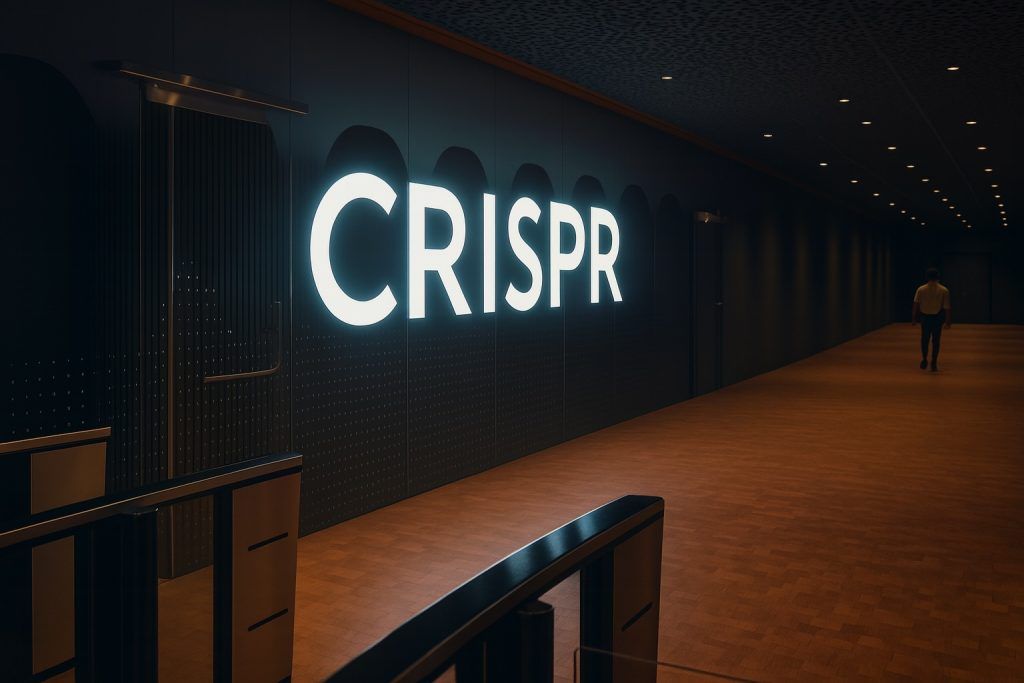- Clinical CRISPR milestone: Intellia’s one-time gene editing therapy NTLA-2001 (nexiguran ziclumeran) showed durable ~90% reductions of disease-causing TTR protein sustained over 3 years in transthyretin amyloidosis patients, with improved clinical outcomes at 24 months and no new safety issues [1] [2]. Data were presented Sept. 25, 2025 at an amyloidosis conference and published in NEJM, reinforcing Intellia’s lead in in vivo CRISPR therapeutics.
- Phase 3 trials on track: Intellia has completed enrollment in its pivotal Phase 3 HAELO study of NTLA-2002(lonvoguran ziclumeran) for hereditary angioedema within just 9 months [3]. Top-line results are expected in 1H 2026, with a Biologics License Application (BLA) filing planned in 2H 2026 and a potential first FDA approval by 2027 [4]. Meanwhile, the Phase 3 MAGNITUDE trials of NTLA-2001 in ATTR cardiomyopathy and polyneuropathy are ongoing globally, aiming to complete enrollment by 2026 [5].
- Surging stock, bullish outlook: NTLA stock has rallied over 60% year-to-date 2025 amid these clinical advances [6], recently spiking ~9.9% in early October to ~$19 after positive trial updates [7]. Wall Street remains optimistic – ~19 analysts rate Intellia a Buy versus only 1 Sell [8], and the average price target in the mid-$30s implies ~70–100% upside from current levels [9] [10]. Notably, JMP Securities upgraded NTLA to “Market Outperform” on Oct. 6, 2025, citing an improving outlook [11] even as one bear (Wedbush) sticks with a cautious Neutraland a $7 target [12].
- Financials and runway: In Q2 2025, Intellia’s revenue more than doubled year-on-year to $14.25 million (+104% YoY) [13] thanks to collaboration payments, though it still reported a net loss per share of ($0.99). The company ended Q2 with a cash balance of $630.5 million, sufficient to fund operations into 2027, past the expected first product launch [14]. Heavy R&D investment continues (trailing 12-month EPS –$4.69 [15]) and Intellia’s net margins remain deeply negative (≈–908%) [16], typical for a pre-revenue biotech.
- Pipeline focus & pivots: Intellia has prioritized its two late-stage programs, NTLA-2001 for ATTR amyloidosis (in partnership with Regeneron) and NTLA-2002 for HAE, as potentially first-in-class one-time cures [17] [18]. Early in 2025, the company cut 27% of staff and discontinued a Phase 1 program (NTLA-3001 for alpha-1 antitrypsin deficiency) to conserve resources for these lead candidates [19] [20]. Intellia’s CRISPR platform is also leveraged via strategic collaborations – e.g. with AvenCell, Kyverna, ONK, and ReCode Therapeutics – extending its reach into CAR-T cell therapy, autoimmune diseases, and lung delivery applications [21].
- Expert commentary: Industry watchers note Intellia made history by demonstrating the world’s first therapeutic in vivo CRISPR gene editing in human patients [22], a milestone that “revolutionized” what gene editing can do inside the body. Analysts highlight the enormous market potential if Intellia’s therapies succeed: management itself projects ~$5 billion in 2028 sales for HAE (NTLA-2002) and $12 billion for ATTR amyloidosis (NTLA-2001) [23] [24], leveraging patient populations in the tens or hundreds of thousands worldwide. However, experts also caution that these forecasts may be optimistic and that significant clinical, regulatory, and commercial execution risks remain [25].
- Investor sentiment: Institutional investors appear confident – roughly 88% of NTLA shares are held by institutions [26]. Notably, Cathie Wood’s ARK Investment Management has been steadily adding: ARK owns over 13 million shares (≈12% of the company) across its funds [27]. Big pharma partner Regeneron also holds a stake (~3% [28]). Insiders are buying as well – board director William Chase purchased 100,000 shares (~$1 million worth) on the open market at ~$10 in August [29], signaling insider confidence. This strong ownership base underpins bullish sentiment, though retail investors and analysts alike remain mindful of the volatility inherent in cutting-edge biotech (NTLA’s 52-week range is $6.28–$21.08 [30]).
Intellia at a Glance: CRISPR Trailblazer in 2025
Intellia Therapeutics, Inc. (NASDAQ: NTLA) is a clinical-stage biotechnology company at the forefront of CRISPRgene editing medicines. Headquartered in Cambridge, MA, Intellia was one of the first companies to harness CRISPR-Cas9 technology to develop potential in vivo therapies – treatments delivered directly into the body to edit genes inside patients’ cells. In fact, Intellia reported the first-ever clinical evidence that CRISPR could provide a therapeutic benefit in humans via in-body gene editing, showing in 2021 that a one-time IV infusion could drastically lower a disease-causing protein in patients [31]. This pioneering achievement, accomplished with their transthyretin amyloidosis (ATTR) program, has put Intellia on the map as a trailblazer in genomic medicine.
Today, Intellia’s mission is to develop curative treatments for severe diseases with few options, by editing or knocking out malfunctioning genes at the source. Its pipeline spans both in vivo therapies (like those for ATTR amyloidosis and hereditary angioedema) and ex vivo approaches (engineering cells outside the body). Intellia’s platform and know-how – based on Nobel Prize-winning science – have attracted top-tier collaborators. For example, Regeneron Pharmaceuticalspartnered with Intellia back in 2016, providing expertise (and funding) to co-develop CRISPR treatments. This alliance has already borne fruit: Regeneron and Intellia’s lead candidate NTLA-2001 for ATTR amyloidosis emerged from their collaboration, and the partners even expanded the deal in 2023 to pursue additional gene-editing therapies for diseases like hemophilia [32]. Beyond Regeneron, Intellia has forged partnerships to apply its CRISPR tools in other domains – AvenCell (for allogeneic CAR-T cancer therapies), Kyverna (engineered T-cells for autoimmune diseases), ONK Therapeutics (natural killer cell therapies in cancer), and ReCode Therapeutics (novel delivery to lung tissue, potentially for cystic fibrosis) are among the companies leveraging Intellia’s platform [33]. These collaborations allow Intellia to extend its reach without straining its own resources, a prudent strategy for a relatively small biotech.
As of October 8, 2025, Intellia is still pre-commercial – none of its experimental drugs have reached the market yet – but it is advancing at least two programs through late-stage trials that could lead to regulatory approvals in the coming years. The company’s headcount and focus were realigned at the start of 2025: Intellia announced a 27% workforce reductionin January and halted several early-stage efforts (most notably discontinuing its NTLA-3001 gene insertion therapy for alpha-1 antitrypsin deficiency lung disease) in order to concentrate on its most promising, near-term opportunities [34] [35]. CEO Dr. John Leonard explained that in a tough market environment, Intellia made the “difficult decision” to channel resources predominantly to its lead programs in ATTR and HAE, which offer the best chance to deliver significant value in the near term [36]. This sharpened focus, along with improving sentiment toward biotech broadly, has helped Intellia’s stock recover from 2022–2023 lows. NTLA shares, which traded under $7 at one point in late 2024, have since rebounded to the high-teens – a ~63% rise in 2025 to date [37] – as clinical milestones fueled renewed investor optimism.
Recent Clinical Breakthroughs and News (Fall 2025)
In the past few weeks, Intellia has delivered major positive news on its CRISPR pipeline, driving both scientific excitement and stock momentum. The end of September 2025 was particularly eventful:
- Landmark ATTR Data in NEJM (September 25, 2025): Intellia announced impressive long-term results from its Phase 1 trial of NTLA-2001 (nexiguran ziclumeran) in hereditary ATTR amyloidosis with polyneuropathy. A single dose of NTLA-2001 led to “rapid, deep and durable” reductions in the disease-causing TTR protein – with ≥90% mean reduction from baseline sustained out to 36 months in patients followed 3 years [38] [39]. Importantly, many patients showed stabilization or improvement in clinical measures of neuropathy at 24 months, suggesting the gene edit isn’t just lowering a lab value but actually translating into better patient outcomes [40] [41]. No new treatment-related adverse events emerged over the extended follow-up [42]; the safety profile remained generally favorable, aside from mild infusion reactions and a few transient liver enzyme bumps as previously reported [43]. These data were unveiled at the 5th International ATTR Amyloidosis Meeting in Italy and simultaneously published in the New England Journal of Medicine [44] [45]– a strong validation by the medical community. In the words of CEO John Leonard, patients receiving NTLA-2001 continue to experience “durable TTR reductions” and the results support the promise that deep, consistent TTR knockdown may halt or even reverse disease progression in ATTR amyloidosis [46]. This NEJM-publication caliber evidence is a milestone for the field of gene editing: it represents the longest efficacy data yet for an in vivo CRISPR therapy in humans. Intellia now anticipates completing enrollment of its Phase 3 trial in hereditary ATTR-PN (MAGNITUDE-2) by the first half of 2026, keeping it on pace for a potential BLA filing by 2028 [47] [48]. The ATTR results not only bolstered Intellia’s stock but also underscored its leadership in a race where patients stand to benefit from a one-time gene fix for a deadly protein deposition disease.
- Phase 3 HAE Trial Fully Enrolled (September 18, 2025): Just a week earlier, Intellia announced it had completed patient enrollment in the global Phase 3 HAELO study of NTLA-2002 (lonvoguran ziclumeran) for hereditary angioedema (HAE) [49]. Remarkably, enrollment was finished in only ~9 months (first patient dosed January 2025), reflecting strong interest from HAE patients and investigators. Nearly half of the ~60 patients enrolled are in the U.S., with the rest across sites in other regions [50]. This rapid recruitment speaks to the unmet need in HAE – a rare disorder where patients suffer recurrent episodes of severe, painful swelling (which can be life-threatening when hitting the airway) [51]. Current HAE therapies require chronic, often burdensome dosing (injections or pills taken frequently) [52]. Intellia’s NTLA-2002 aims to “edit out” HAE attacks entirely with a one-time infusion, by knocking out the KLKB1 gene and eliminating kallikrein protein (a trigger of swelling attacks) [53]. Interim Phase 1/2 data were highly encouraging – a one-time dose led to dramatic 98% reductions in monthly attack rates, with all patients in the highest-dose cohorts becoming attack-free over a multi-year follow-up [54] [55]. In HAELO’s placebo-controlled Phase 3, the primary endpoints will examine reduction in attack frequency and proportion of patients rendered attack-free over 5–28 weeks post-treatment [56]. Intellia now projects top-line Phase 3 results in 1H 2026, and is “on track” to submit a BLA in 2H 2026 – potentially enabling a U.S. launch by the first half of 2027 if approved [57] [58]. Achieving full enrollment in HAELO ahead of schedule was hailed by CEO Leonard as a “pivotal moment” for the company, demonstrating execution strength and the enthusiasm of the HAE community for a functional cure [59]. HAE experts like Dr. Aleena Banerji of Mass General are likewise optimistic, noting that based on early data, NTLA-2002 “shows great promise to positively transform the HAE treatment paradigm” [60]. With regulatory designations such as FDA Orphan Drug and the EMA’s PRIME already granted to NTLA-2002 [61], the therapy is positioned as a potential first-in-class genomic cure for HAE. The next big catalyst will be the 2026 readout – if positive, Intellia would make history again with the first approved in vivo CRISPR therapy for a genetic disease.
- Other News – Inducement Grants & Presentations: On October 3, 2025, Intellia issued a routine update that it granted equity inducements to six new employees under Nasdaq Listing Rule 5635(c)(4) [62], reflecting ongoing team expansion (despite earlier layoffs, the company is hiring critical talent to support late-stage development and future commercialization). Additionally, Intellia plans to present more follow-up data from the Phase 1/2 HAE study by Q4 2025 [63] – investors will watch upcoming medical meetings for any new nuggets on durability or safety (e.g. possibly at the American College of Allergy, Asthma & Immunology conference in late 2025). Furthermore, Intellia’s management has been active at investor conferences (such as a H.C. Wainwright genetic medicines event in Oct. 2025) to articulate its strategy and progress [64]. All these communications aim to maintain transparency and build momentum as the company moves toward its first regulatory filings.
In sum, current news flow around early October 2025 is overwhelmingly positive for Intellia: the company is hitting its clinical milestones (with NTLA-2001 proving durable efficacy and NTLA-2002 speeding through Phase 3 enrollment), garnering prestigious journal validation, and setting the stage for pivotal data in the coming months. This has not only validated Intellia’s CRISPR platform scientifically but also energized investors, as evidenced by the stock’s jump and analyst upgrades.
Stock Performance and Financial Analysis
Intellia’s stock (NTLA) has experienced a robust rebound in 2025, reflecting both the company’s achievements and a broader revival in biotech sentiment. At around $19–20 per share in early October 2025, NTLA has risen roughly +150% from its 52-week low (near $6.28) and is up ~63% year-to-date [65] [66]. The stock spiked notably in late September and into October on the back of the trial news: for instance, on October 1, NTLA popped nearly 10% intraday, trading up to $18.99 from a prior close of $17.27 [67]. This surge came as investors digested the NEJM-published ATTR data and the rapid HAE trial progress – concrete signs that Intellia’s pipeline is de-risking and moving closer to commercialization.
Despite this rally, Intellia’s market capitalization is still only about $2–2.2 billion [68], reflecting that the company remains in an early-stage, loss-making phase. From a valuation perspective, NTLA might appear expensive on traditional metrics (the company has no product revenue and thus no P/E ratio; its price-to-sales is extremely high relative to the token collaboration revenue it does have). However, Wall Street largely values Intellia on future potential – the multi-billion dollar sales opportunity if its gene-editing therapies reach the market – rather than current earnings.
Latest Financial Results (Q2 2025): Intellia’s most recent quarterly earnings (reported August 7, 2025) showed some encouraging trends but also the typical financial profile of a clinical-stage biotech. The company recorded $14.25 million in revenue for Q2, more than doubling from ~$7 million a year prior [69]. This 104% YoY revenue jump [70] was mainly due to collaboration income (e.g. milestone payments or R&D cost reimbursements from partners like Regeneron). It underscores that Intellia’s alliances are providing a meaningful financial boost as programs progress. Still, expenses far outweighed revenue: R&D spending to run multiple trials and a sizeable team led to a quarterly net loss of $0.99 per share (about $78 million net loss, given shares outstanding) [71]. Notably, this was a smaller loss than analysts expected (the consensus EPS was –$1.03, so Intellia “beat” by ~$0.04 [72]), and also an improvement from the year-ago quarter (which had a loss of $1.52 per share) [73]. The narrowing loss reflects both revenue uptick and prior cost-cutting measures. Key financial ratios remain characteristically poor – for the first half of 2025, Intellia’s net profit margin was around –900% and return on equity ~–57% [74], underlining that it spends nearly 10x its revenue in pursuit of pipeline development.
Crucially, Intellia’s balance sheet is strong enough to support its ambitious R&D plans for now. As of June 30, 2025, the company held approximately $630.5 million in cash, cash equivalents and marketable securities [75]. Intellia projects this cash runway is sufficient to fund operations into the first half of 2027, which notably would carry it through the anticipated launch of its first product [76]. In other words, management believes it can reach the commercialization of NTLA-2002 for HAE (expected by 2027 if all goes well) without needing to raise additional capital. This is a significant de-risking from an investor standpoint, as it reduces near-term dilution risk. That said, if timelines slip or if Intellia chooses to advance new programs, additional financing by 2026+ isn’t off the table – a common situation for pre-revenue biotechs.
On the stock performance metrics front, technical indicators have turned favorable after the year’s rally. NTLA’s 50-day moving average (~$12.50) is now well above its 200-day average (~$10.45), a “golden cross” pattern indicative of positive momentum [77]. The stock’s RSI (Relative Strength Index) has approached ~69 in early October, which is near overbought territory (70+) [78] – a sign that shares saw heavy buying pressure lately. Some consolidation or profit-taking would not be surprising in the short term, especially given overall market volatility. But the beta of ~2.3 suggests NTLA is quite volatile and tends to amplify biotech sector moves [79]. Investors should be prepared for swings around data readouts and macro biotech sentiment shifts.
From a valuation outlook perspective: current enterprise value (~$1.6B, net of cash) might be rationalized by the probability-weighted future revenues of NTLA-2001 and NTLA-2002. Intellia’s own projections (which some view as aggressive) envision multi-billion dollar annual sales by 2028 if both programs succeed – e.g. ~$5B in HAE and ~$12B in ATTR amyloidosis [80] [81]. Even discounting those heavily, one can see why many analysts think the stock remains undervalued relative to its long-term opportunity. In fact, at ~$20/share, Intellia’s market cap (~$2B) is just a fraction of what one successful drug for a rare disease can be worth (for context, Alnylam’s RNAi drugs for ATTR polyneuropathy and HAE, which require chronic dosing, each generate hundreds of millions per year in revenue). If Intellia truly delivers one-time cures, the value proposition is enormous. Conversely, if trials disappoint or get delayed, NTLA stock could retrace significantly – it’s a high-risk, high-reward story, as is typical for cutting-edge biotech.
Pipeline and R&D Update: Forging a New Class of Medicines
Intellia’s R&D pipeline in 2025 is focused and deep, centered on its two wholly-owned lead programs while also exploring next-generation applications of CRISPR through partnerships. Here’s a closer look at each major pipeline asset and strategic initiative:
- NTLA-2001 (Nexiguran Ziclumeran) for ATTR Amyloidosis: This is Intellia’s flagship in vivo CRISPR therapy, developed in collaboration with Regeneron. NTLA-2001 is administered as a lipid nanoparticle (LNP) infusion carrying CRISPR-Cas9 and a guide RNA to knock out the TTR gene in liver cells [82] [83]. The goal is to permanently reduce production of misfolded transthyretin (TTR) protein, which in ATTR amyloidosis builds up in tissues, causing neuropathy and/or cardiomyopathy. Interim Phase 1 results were groundbreaking – a single dose achieved ~87% mean serum TTR reduction at highest dose by day 28 [84], and now longer-term data show ~90% reductions sustained out to 2–3 years [85] with signs of clinical benefit. These are unprecedented outcomes in ATTR, where existing drugs (like tafamidis or patisiran) at best slow the disease and require chronic treatment. Intellia is pursuing two indications:
- Hereditary ATTR with Polyneuropathy (ATTRv-PN): This form affects peripheral nerves and is currently treated by RNA silencers (e.g. Onpattro, Amvuttra). NTLA-2001 could halt and potentially reverse neuropathy progression with one dose. Intellia has initiated the Phase 3 MAGNITUDE-2 trial in ATTRv-PN as of April 2025 [86], aiming to enroll ~50 patients globally (randomized 1:1 to a single 55 mg dose vs placebo) [87]. With enrollment expected to complete by H1 2026, the company anticipates filing for approval in this indication by 2028 [88]. Notably, the recent NEJM data included patients who had failed patisiran – and 72% of those patients showed clinically meaningful improvement (≥4 point gains in neuropathy score) after NTLA-2001 [89], a strong signal that Intellia’s approach can rescue patients beyond the reach of existing drugs.
- ATTR with Cardiomyopathy (ATTR-CM): This form (which can be hereditary or wild-type) affects the heart and is a leading cause of heart failure in the elderly. Intellia sees a huge opportunity here – wild-type ATTR-CM alone may afflict ~200–500k people worldwide [90]. The Phase 3 MAGNITUDE trial in ATTR-CM is larger, targeting up to 1,200 patients (recently expanded from 765 to strengthen data in key subgroups) [91]. This global trial is well underway and ahead of enrollment projections (expected >650 patients enrolled by end of 2025) [92]. In May 2025, Intellia presented Phase 1 results specifically in cardiomyopathy patients, showing robust TTR reductions in both wild-type and variant ATTR-CM and a favorable safety profile [93]. The ability to treat wild-type (age-related) ATTR is a differentiator, as current RNAi therapies aren’t approved for that segment. Intellia hasn’t given a firm timeline for ATTR-CM approval yet – it may follow a bit behind the PN indication due to larger trial size – but some analysts speculate a 2027–28 timeframe is plausible. Europe is an area of interest too: industry experts suggested the EMA could even approve Intellia’s ATTR therapy as Europe’s first CRISPR medicine if data are compelling [94]. While that remains speculative, it underscores the significance of NTLA-2001 globally.
- NTLA-2002 (Lonvoguran Ziclumeran) for Hereditary Angioedema: This is Intellia’s second major in vivo therapy, and it is wholly owned. NTLA-2002 uses CRISPR to knock out the KLKB1 gene in liver hepatocytes, thereby eliminating plasma kallikrein – the upstream driver of the inflammatory cascade that causes HAE swelling attacks [96] [97]. Essentially, it’s a one-and-done way to provide what currently requires lifelong prophylactic therapy. After spectacular initial clinical results (patients given NTLA-2002 had a 99% reduction in HAE attack rate on average, with many becoming completely attack-free long-term [98]), this program moved rapidly. As noted, the Phase 3 HAELO trial finished enrollment in September 2025 and is expected to read out interim efficacy data in the first half of 2026 [99]. Key endpoints include number of attacks and proportion of patients with zero attacks over 6 months [100], which will directly demonstrate if NTLA-2002 can render patients essentially cured. Given HAE’s rarity (~1 in 50,000 people, or ~15k–20k worldwide have symptomatic HAE [101]), Intellia is targeting a concentrated market – but one that currently sees very high drug prices. Existing HAE prophylactics (like Takeda’s lanadelumab or BioCryst’s oral berotralstat) cost hundreds of thousands of dollars per year, per patient. Intellia’s vision is to capture a large share of this market by offering a curative therapy, potentially priced in the low to mid seven figures (for context, gene therapies for rare diseases often launch around $2–3 million). The company has floated a potential $5 billion annual sales opportunity by 2028 for NTLA-2002 [102], which implies treating a few thousand patients a year globally (or higher pricing). While some analysts view that figure with skepticism, it’s clear NTLA-2002 could be a commercial game-changer if it delivers long-term remission of HAE. With multiple regulatory fast-track designations (FDA RMAT, EMA PRIME, etc.) [103], the path to market might be streamlined. The competition in HAE gene therapy is limited – no other gene editing or gene therapy for HAE is in clinical trials as of 2025, to our knowledge. So Intellia has a first-mover advantage. The main competition remains the entrenched prophylactic drugs, which it will have to convince physicians and payers to replace. Safety and durability will be key in that argument (a one-time CRISPR cure must show it doesn’t have late adverse effects and that the benefit truly lasts for many years). Intellia plans to present longer-term Phase 1/2 data at a conference in late 2025 [104], which may further reinforce the durability (the initial patients are out beyond 2–3 years with no HAE attacks and no need for additional meds [105]).
- Other Pipeline Candidates: Outside of NTLA-2001 and NTLA-2002, Intellia’s internal pipeline had included NTLA-3001 (CRISPR-mediated gene insertion for Alpha-1 Antitrypsin Deficiency lung disease) and NTLA-2003/NTLA-200X series for undisclosed or early programs. However, as mentioned, NTLA-3001 was halted in 2024 before dosing many patients [106] – Intellia determined that focusing on its two lead programs would yield better returns in the near term, rather than spending significant resources on a high-risk early program in a very competitive AATD space (where multiple RNA-based therapies and a Beam Therapeutics base-editing approach are also vying) [107]. Intellia also pruned some “research-stage” programs in the January 2025 restructuring [108]. The company has signaled that once NTLA-2001 and -2002 are farther along, it will explore additional in vivo editing applications, potentially using newer tech like CRISPR 2.0 (base editing, prime editing) or improved delivery mechanisms. Intellia’s R&D roadmap, outlined in its 2025 corporate presentation, emphasizes “expanding the CRISPR toolbox” – meaning they’re investing in capabilities like gene insertion (adding DNA sequences, not just knocking out, which could address diseases caused by missing genes) and tissue-targeted delivery (e.g. using targeted LNPs or viral vectors to reach organs beyond the liver). The partnerships with ReCode (for lung delivery) and a recent alliance with SparingVision (for CRISPR in ophthalmology, targeting retinal diseases) show Intellia’s interest in branching into other tissues. Additionally, Intellia’s ex vivo efforts through AvenCell, Kyverna, and ONK aim to create edited cell therapies: e.g., making CAR-T cells that are “off-the-shelf” (via gene editing to avoid immune rejection) for cancer, or editing T regulatory cells to treat autoimmune conditions (Kyverna’s focus). While these are mostly partner-led programs where Intellia provides tools and IP, they could yield long-term upside or milestone payments if those collaborations succeed.
- Regulatory and Manufacturing Preparations: With two programs in Phase 3, Intellia is also gearing up for the practical challenges of bringing a gene editing therapy to market. This includes scaling up manufacturing of its LNP-CRISPR product, ensuring quality control of the CRISPR components, and planning for commercial distribution. The company has been building out internal CMC (Chemistry, Manufacturing, and Controls) expertise and could seek manufacturing partnerships. Notably, Intellia’s therapies are one-time infusions that will likely be given in specialized centers (due to infusion monitoring and short-term steroid use to mitigate reactions). So, a lot of work is ahead to set up treatment centers, train physicians, and work with payers on reimbursement models (potentially annuity or outcomes-based payments for these expensive one-time treatments). Intellia’s cash runway into 2027 [109] suggests it is budgeting for these pre-launch activities while it awaits Phase 3 data. Any regulatory hurdles – e.g. requirement of additional studies or safety monitoring – will be important to monitor. Thus far, both NTLA-2001 and NTLA-2002 have RMAT (Regenerative Medicine Advanced Therapy) designations, which means the FDA will provide enhanced guidance and a potentially faster review if the Phase 3 data are compelling.
In summary, Intellia’s pipeline strategy as of late 2025 is to double down on the winners – expedite NTLA-2001 and NTLA-2002 to approval – while keeping its platform hotwired for future opportunities through select collaborations and technology upgrades. This focused approach has drawn praise because it targets conditions where CRISPR’s one-time approach could be most transformative (ATTR and HAE are serious diseases where current therapies are lifelong and not curative). If Intellia can execute and regulators agree on the risk-benefit, the next two years could see this biotech evolve from a clinical-stage hopeful into a company with approved products – a first in the CRISPR therapeutics field for in vivo editing.
Wall Street’s Take: Analysts’ Views and Investor Sentiment
Analyst Sentiment: The analyst community covering Intellia is generally bullish, reflecting the potential of its gene-editing platform, though opinions differ on just how much optimism is warranted. According to MarketBeat and other aggregators, as of early October 2025 Intellia has a consensus rating of “Moderate Buy”, with roughly 19 Buy ratings, 5 Holds, and 1 Sell [110]. Price targets show a wide range – from a low of about $7–8 (deeply pessimistic scenario) to highs above $50 or even $100 (blue-sky scenarios) [111] [112]. The median/meanprice target lies in the $30–36 area [113] [114], which implies significant upside (~70% or more) from the ~$20 stock price. For example, DirectorsTalk reported an average target of $34.64 (about 69% above the current price) [115], and a Nasdaq analysis highlighted a consensus of ~$36.28 (+82% upside) [116]. This bullish consensus is underpinned by the expectation that Intellia will be one of the first commercial CRISPR companies, with a platform that could address multiple diseases over time.
However, it’s worth noting that not all analysts are uniformly positive. There is at least one Sell rating on the stock – for instance, earlier in 2024 Barclays had downgraded some gene editing stocks (unclear if they are the current “sell”). Wedbush has been one of the more skeptical voices, maintaining a “Neutral” rating with a $7 price target as recently as mid-2024 [117]. Wedbush’s cautious stance likely stems from concerns about the lengthy path to market and competition, as well as Intellia’s need to eventually show not just clinical efficacy but also commercial viability. JMP Securities had been at “Market Perform” (hold) but on Sept 30, 2025 upgraded Intellia to Outperform, raising their target (reports indicate JMP sees the stock doubling in the next year) [118]. Wells Fargo in August reaffirmed an Overweight rating, though they trimmed their target to $45 from $50 [119], still one of the higher targets and reflecting confidence in Intellia’s platform despite the challenging biotech tape in 2023–2024. Guggenheim also reiterated a Buy in August with a more muted $14 target (possibly a valuation methodology difference) [120] – interestingly, $14 was below the trading price by October, so that target may be outdated or overly conservative. Across the board, the majority of analysts recommend buying or holding Intellia, acknowledging the platform value but often with the caveat that this is a long-term story.
We also have commentary from investment outlets and biotech experts. In an October 2025 Motley Fool analysis, the author noted Intellia “has two promising late-stage candidates” and “incredible hopes” for them, but cautioned that the company’s own sales projections appear very ambitious and “the stock carries considerable risk” [121]. This captures the classic bull vs. bear debate on Intellia:
- The Bulls argue that Intellia could revolutionize treatment for ATTR and HAE, capturing large portions of those markets as a one-time cure – and that its CRISPR platform gives it a pipeline of follow-on opportunities. They point to the fact Intellia already made history (first in vivo CRISPR success) and has strong partners (Regeneron, etc.). Many bulls see the stock’s pullback in 2022–2023 (when gene editing fell out of favor) as overdone, and that recent data is proving the technology’s worth. The heavy insider and institutional buying is also a bull argument: for instance, in August a board director bought $1 million of stock on the open market [122], and Cathie Wood’s ARK (known for its focus on genomics) increased its already-large stake – ARK Investment Management now owns over 13 million shares of NTLA (combined across ARKK, ARKG, etc.), slightly raising its position in Q1 2025 [123]. ARK’s ~12% ownership and Vanguard’s ~10% ownership [124] mean two long-term-minded investors hold over 20% of the company. This high institutional ownership (nearly 89% of the float [125]) can signal confidence in the long run (though it can also mean volatility if those funds ever rotate out).
- The Bears/Cautious camp highlight that Intellia is still years away from generating product revenue. Even if approved in 2027, uptake of these novel therapies is uncertain – physicians may be slow to adopt gene editing in practice initially, payers may push back on price, and manufacturing/scaling challenges could arise. Moreover, competitors are not standing still: Verve Therapeutics is advancing a base-editing therapy for cardiovascular disease, CRISPR Therapeutics (with Vertex) already got the first CRISPR therapy approved ex vivo (for sickle cell) and is flush with cash to tackle new targets, and older modalities (like Alnylam’s RNAi drugs for ATTR or AstraZeneca/Takeda’s therapies for HAE) will fight to retain their market share. If Intellia’s Phase 3 data are anything less than stellar, or if a safety issue crops up (e.g. off-target mutagenesis leading to a cancer risk – a theoretical concern that hasn’t materialized yet), the whole story could unravel. Bears also note Intellia’s cash burn– while $630M in cash sounds like a lot, the company is spending ~$100M+ per quarter in R&D and SG&A combined, so that war chest could deplete by 2027, meaning a need to either partner or issue more stock if timelines slip. There’s also macro risk: high interest rates and risk-averse markets in 2024–2025 hammered many biotech valuations, and sentiment could sour again, limiting financing options. Indeed, Intellia’s own restructuring in Jan 2025 was a response to this tougher funding environment that “darkened” for gene editing biotechs [126] – several peers had to lay off staff and cut programs, and Intellia was proactive in doing so to extend its runway.
Overall, the investor sentiment around Intellia as of October 2025 skews positive, with a sense that “the worst is over” for the gene-editing downturn and that Intellia is emerging as a frontrunner with real clinical proof. The stock’s strong performance in 2025 (tripling off lows) reflects that sentiment shift. But the community is also clear-eyed about risks. As one financial blogger put it, Intellia offers a “compelling opportunity” for those with a risk-tolerant profile and interest in gene editing, but “as with any biotech investment… one must consider both the significant upside and inherent risks associated with clinical-stage companies” [127]. This measured optimism seems prudent – Intellia is likely to be a news-driven stock for the next 1–2 years. Positive trial results or regulatory wins could send it soaring further (some price targets in bull cases exceed $50–$100, implying multi-billion market cap if all goes right). Conversely, any hiccup could result in sharp declines (as a reminder, NTLA traded at $6–7 just 10 months ago when sentiment was poor).
Institutional and Public Interest: Intellia garners a lot of attention not just from professional analysts but also from the biotech investing public, partly due to its association with high-profile names in CRISPR (Jennifer Doudna was a co-founder, and although she’s not active in the company’s day-to-day, her name is often invoked in CRISPR discussions) and ARK Invest’s vocal support of CRISPR stocks. Retail investor forums and social media (e.g. Reddit’s r/stocks or X/Twitter FinTwit) occasionally buzz about NTLA, especially after big news like the NEJM publication – highlighting it as a “pure-play” CRISPR bet alongside others like CRISPR Therapeutics (CRSP) and Beam Therapeutics (BEAM). The public sentiment among biotech enthusiasts is generally that Intellia is one of the most exciting smaller biotechs, given that it is attempting something revolutionary: editing genes inside patients to cure disease. There’s almost a sci-fi allure to what Intellia is doing, which captures the imagination. Of course, that also means the stock can trade on hype and hope at times. It’s telling that in late 2021, when CRISPR hype was at a peak, NTLA stock briefly hit over $170 (on initial Phase 1 data) – a reminder of how exuberant the market can get. Since then it has been a rollercoaster down and partway back up. Savvy investors now are trying to ascertain a fair value based on real progress, rather than hype. The moderation of targets to the $30s suggests a more rational approach now, anchored in achievable near-term milestones (like the HAE data in 2026) rather than just long-term TAM (total addressable market) stories.
In conclusion, Intellia finds itself in a position where execution is key. It has the science and momentum on its side: strong Phase 1 data, Phase 3 trials advancing, and an earned seat at the table as a leader in genomic medicine. The next 6–12 months will involve crunch time for its Phase 3 trials and preparing for regulatory filings. Investors seem willing to give management the benefit of the doubt, as reflected in the rising share price and supportive analyst coverage. Yet, they will also be quick to react to any new information – every data update, conference presentation, or FDA meeting outcome will be parsed for clues on whether Intellia can deliver on the CRISPR promise. If it can, the upside could be life-changing for patients and highly rewarding for shareholders. If not, Intellia would join the ranks of biotechs that fell short after raising hopes. As of October 2025, however, the balance of evidence leans toward optimism, with experts calling Intellia’s recent data “game-changing” and big-money investors increasing their stakes, all suggesting that this CRISPR innovator is one to watch on the road to 2027.
Sources:
- Intellia Therapeutics Phase 1 ATTR amyloidosis data – GlobeNewswire, Sept. 25, 2025 [128] [129]
- Intellia Therapeutics Phase 3 HAE trial enrollment PR – GlobeNewswire, Sept. 18, 2025 [130] [131]
- MarketBeat instant analysis of NTLA stock surge and Q2 2025 financials [132] [133]
- DirectorsTalk analyst summary (Madison Wilson, Oct. 3, 2025) – upside potential, partnerships, and technicals [134] [135]
- Motley Fool via Nasdaq (Prosper Junior Bakiny, Oct. 7, 2025) – discussion of Intellia’s pipeline and sales projections [136] [137]
- BioPharma Dive (Ned Pagliarulo, Jan. 10, 2025) – Intellia layoffs and pipeline prioritization [138] [139]
- Intellia Q2 2025 results – SEC filing (Ex.99.1) and commentary from CEO John Leonard [140] [141]
- TS2.tech Top 100 Biotech Companies (June 22, 2025) – profile of Intellia’s innovations [142]
- MarketBeat ownership and ratings data – institutional holdings and analyst rating breakdown [143] [144]
- Reuters / Nasdaq news on JMP Securities upgrade (Oct. 6, 2025) – analyst outlook and price target range [145] [146]
References
1. www.globenewswire.com, 2. www.globenewswire.com, 3. www.globenewswire.com, 4. www.globenewswire.com, 5. www.globenewswire.com, 6. www.nasdaq.com, 7. www.marketbeat.com, 8. www.directorstalkinterviews.com, 9. www.directorstalkinterviews.com, 10. www.nasdaq.com, 11. www.nasdaq.com, 12. www.marketbeat.com, 13. www.marketbeat.com, 14. www.sec.gov, 15. www.directorstalkinterviews.com, 16. www.marketbeat.com, 17. www.globenewswire.com, 18. www.globenewswire.com, 19. www.biopharmadive.com, 20. www.biopharmadive.com, 21. www.directorstalkinterviews.com, 22. ts2.tech, 23. www.nasdaq.com, 24. www.nasdaq.com, 25. www.nasdaq.com, 26. www.marketbeat.com, 27. www.marketbeat.com, 28. www.nasdaq.com, 29. www.marketbeat.com, 30. www.directorstalkinterviews.com, 31. ts2.tech, 32. www.reuters.com, 33. www.directorstalkinterviews.com, 34. www.biopharmadive.com, 35. www.biopharmadive.com, 36. www.biopharmadive.com, 37. www.nasdaq.com, 38. www.globenewswire.com, 39. www.globenewswire.com, 40. www.globenewswire.com, 41. www.globenewswire.com, 42. www.globenewswire.com, 43. www.globenewswire.com, 44. www.globenewswire.com, 45. www.globenewswire.com, 46. www.globenewswire.com, 47. www.globenewswire.com, 48. www.globenewswire.com, 49. www.globenewswire.com, 50. www.globenewswire.com, 51. www.globenewswire.com, 52. www.globenewswire.com, 53. www.globenewswire.com, 54. www.sec.gov, 55. www.sec.gov, 56. www.globenewswire.com, 57. www.globenewswire.com, 58. www.globenewswire.com, 59. www.globenewswire.com, 60. www.globenewswire.com, 61. www.globenewswire.com, 62. ir.intelliatx.com, 63. www.globenewswire.com, 64. ir.intelliatx.com, 65. www.nasdaq.com, 66. www.directorstalkinterviews.com, 67. www.marketbeat.com, 68. www.directorstalkinterviews.com, 69. www.marketbeat.com, 70. www.marketbeat.com, 71. www.marketbeat.com, 72. www.marketbeat.com, 73. www.marketbeat.com, 74. www.marketbeat.com, 75. www.sec.gov, 76. www.sec.gov, 77. www.directorstalkinterviews.com, 78. www.directorstalkinterviews.com, 79. www.marketbeat.com, 80. www.nasdaq.com, 81. www.nasdaq.com, 82. www.sec.gov, 83. www.sec.gov, 84. www.sec.gov, 85. www.globenewswire.com, 86. www.globenewswire.com, 87. www.globenewswire.com, 88. www.globenewswire.com, 89. www.globenewswire.com, 90. www.nasdaq.com, 91. www.sec.gov, 92. www.sec.gov, 93. www.sec.gov, 94. ts2.tech, 95. www.nasdaq.com, 96. www.sec.gov, 97. www.globenewswire.com, 98. www.sec.gov, 99. www.globenewswire.com, 100. www.globenewswire.com, 101. www.globenewswire.com, 102. www.nasdaq.com, 103. www.globenewswire.com, 104. www.globenewswire.com, 105. www.sec.gov, 106. www.biopharmadive.com, 107. www.biopharmadive.com, 108. www.biopharmadive.com, 109. www.sec.gov, 110. www.directorstalkinterviews.com, 111. www.nasdaq.com, 112. www.nasdaq.com, 113. www.directorstalkinterviews.com, 114. www.nasdaq.com, 115. www.directorstalkinterviews.com, 116. www.nasdaq.com, 117. www.marketbeat.com, 118. www.nasdaq.com, 119. www.marketbeat.com, 120. www.marketbeat.com, 121. www.nasdaq.com, 122. www.marketbeat.com, 123. www.marketbeat.com, 124. www.marketbeat.com, 125. www.marketbeat.com, 126. www.biopharmadive.com, 127. www.directorstalkinterviews.com, 128. www.globenewswire.com, 129. www.globenewswire.com, 130. www.globenewswire.com, 131. www.globenewswire.com, 132. www.marketbeat.com, 133. www.marketbeat.com, 134. www.directorstalkinterviews.com, 135. www.directorstalkinterviews.com, 136. www.nasdaq.com, 137. www.nasdaq.com, 138. www.biopharmadive.com, 139. www.biopharmadive.com, 140. www.sec.gov, 141. www.sec.gov, 142. ts2.tech, 143. www.marketbeat.com, 144. www.marketbeat.com, 145. www.nasdaq.com, 146. www.nasdaq.com
